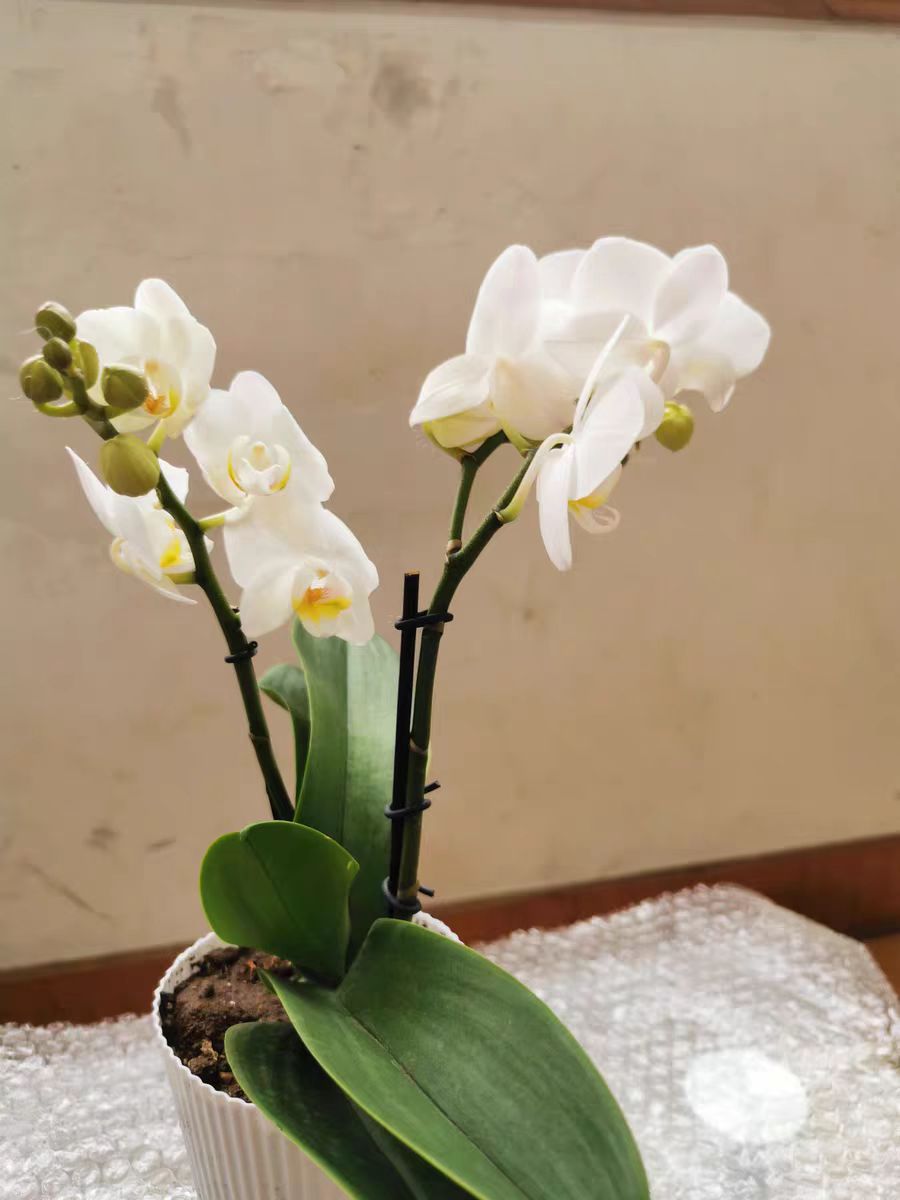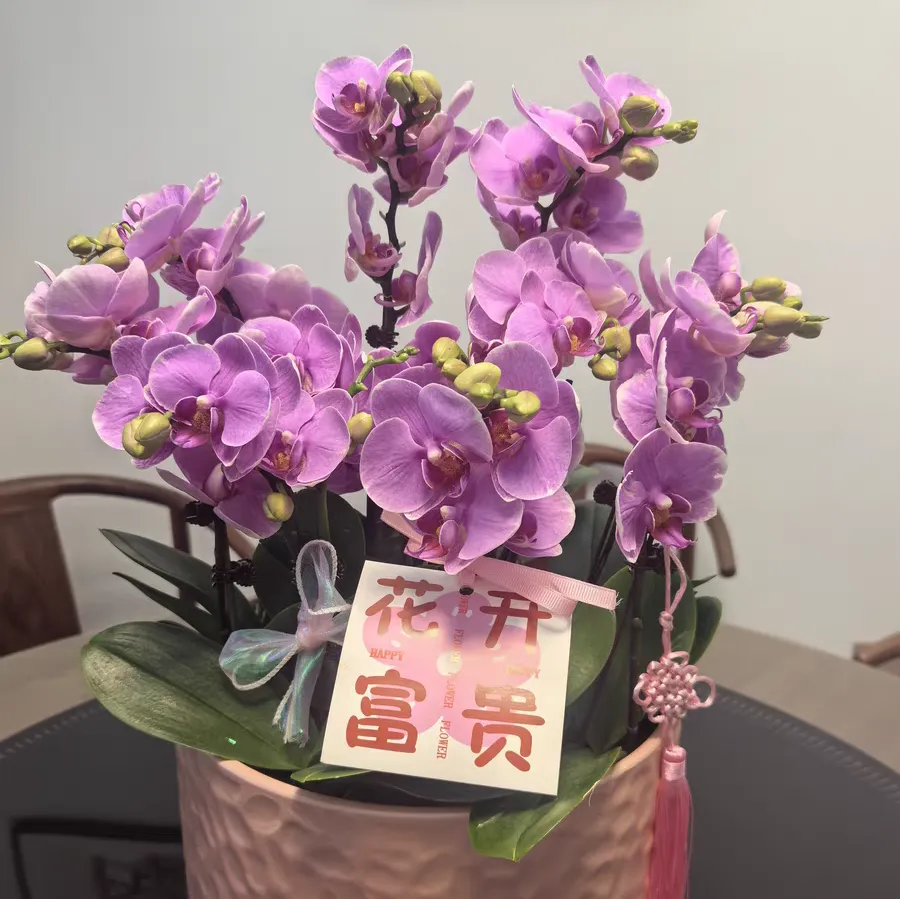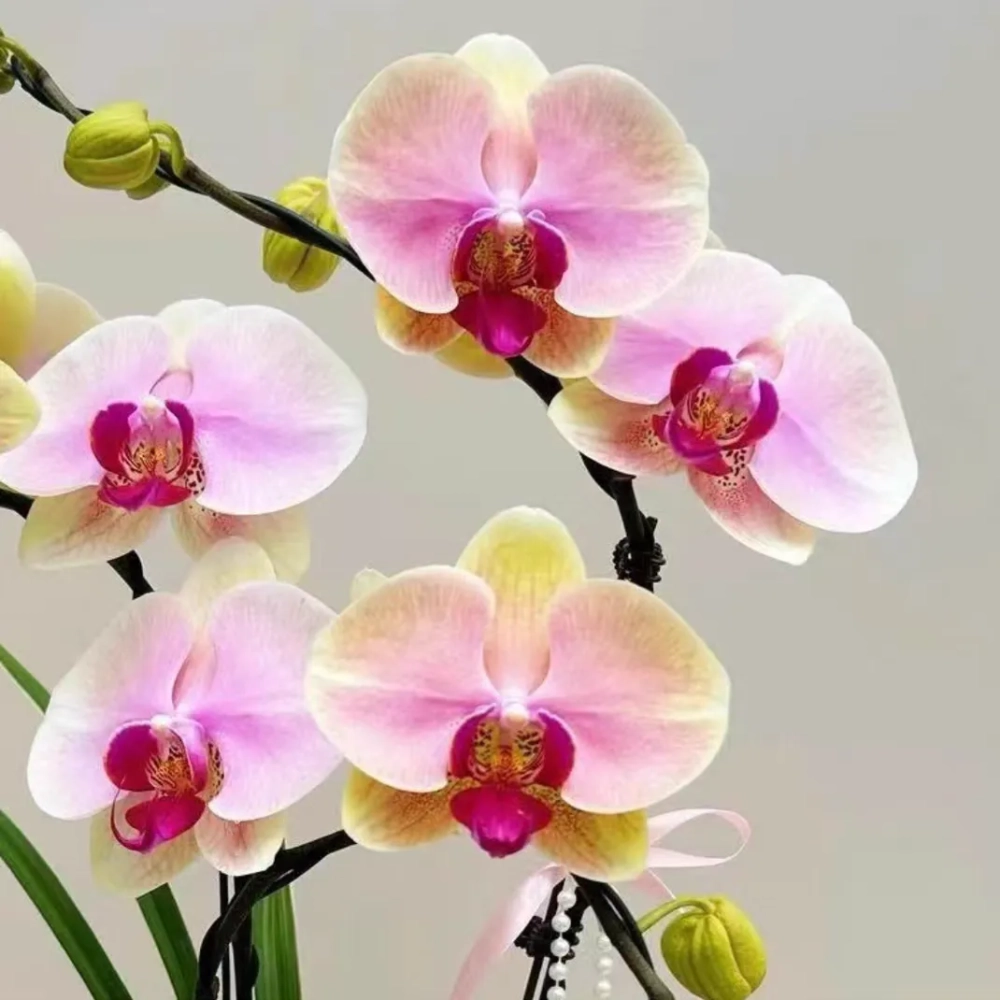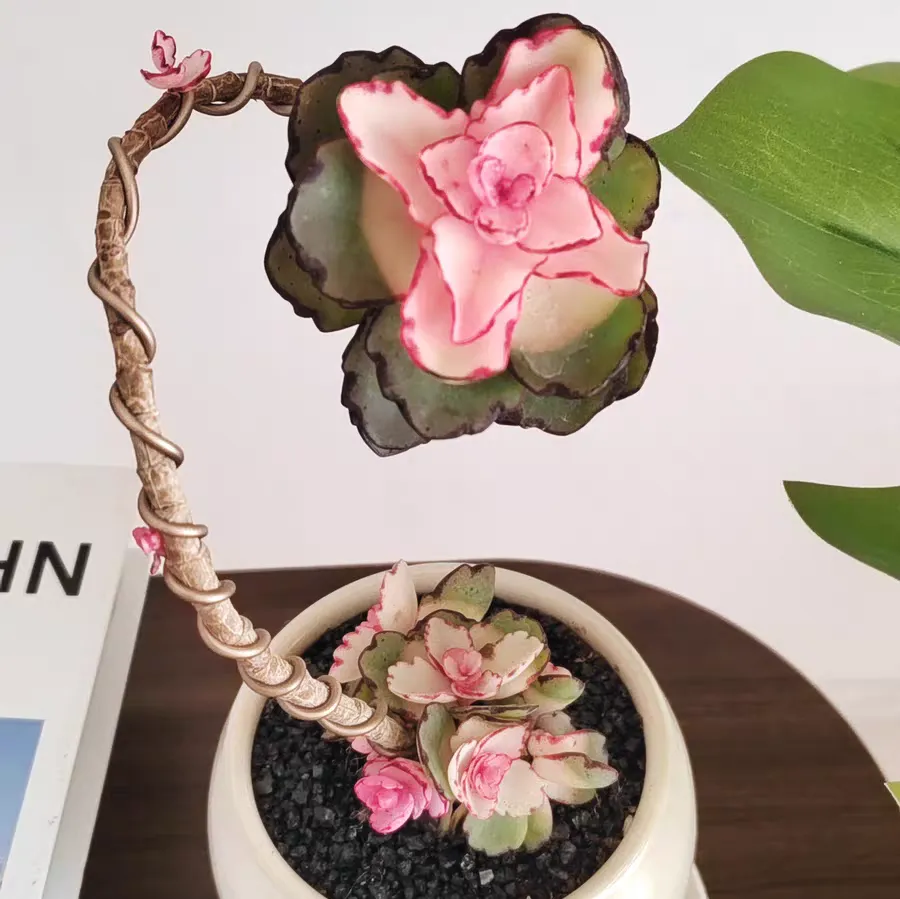Phalaenopsis is highly favored by flower enthusiasts. Many people suddenly wonder whether it is possible to cut Phalaenopsis and keep it in water for cultivation. And how long can it be kept in this way? There are a lot of botanical knowledge and maintenance points involved behind these questions.
Theoretically and practically, Phalaenopsis can be cut and placed in water. As an epiphytic plant with aerial roots, Phalaenopsis has a unique way of absorbing water and air through its roots. Cutting the flower stalk and placing it in water makes use of the totipotency of plant cells. Under suitable conditions, the cells can differentiate and maintain the basic life activities of the flower stalk. However, this is different from cultivating the whole Phalaenopsis plant in soil or water. The cut flower stalk is separated from its original nutrient supply system and can only sustain its life by relying on the nutrients stored in itself and the small amount of substances absorbed from the water.
The survival time of a cut Phalaenopsis flower stalk kept in water is not fixed. Generally, with careful care, it can be maintained for 2 to 4 weeks. In the initial stage, relying on the nutrients stored in itself, the flower stalk can continue to bloom and maintain a bright state. But as time goes by, as the nutrients are gradually consumed, the flower stalk will decline. There are many factors that affect its survival time in water.
The quality of water is one of the key factors. Clean and pollution-free water is essential. It is best to use pure water or tap water that has been left standing for one or two days to reduce harmful substances such as chlorine in the water that are harmful to the flower stalk. If the water quality is poor, a large number of bacteria and microorganisms will multiply, quickly eroding the bottom of the flower stalk and causing rot, which shortens the survival time. For example, if Phalaenopsis is cultivated with polluted river water, the flower stalk may wither due to root rot within a week.
Temperature is also crucial. Phalaenopsis thrives in an environment with a temperature range of 15 to 25°C. If the temperature is too high, the water evaporates quickly, and the flower stalk is prone to dehydration, and the reproduction of microorganisms will also accelerate. If the temperature is too low, the metabolism will slow down, and the flower stalk will have difficulty absorbing water and nutrients normally, and it may even suffer from frost damage. In the high temperature of summer, the Phalaenopsis kept in water may start to decline in about two weeks. While in winter, when the indoor temperature is suitable, it may be able to last about one more week.
In addition, light also affects the survival time in water. An appropriate amount of scattered light can promote photosynthesis, allowing the flower stalk to produce and store more nutrients. But strong direct light will burn the flowers and leaves and accelerate water loss. Placing the Phalaenopsis in a bright place indoors without direct light can effectively extend its survival time in water. If it is kept in a dark corner for a long time, the lack of sufficient photosynthesis will cause the flower stalk to wither prematurely due to a lack of energy.
In conclusion, it is feasible to cut Phalaenopsis and place it in water, but its survival time is limited. Although it cannot last as long as cultivating the whole plant, within the short period of 2 to 4 weeks, it can bring a unique aesthetic feeling and pleasure to our lives. By understanding the factors that affect its survival time in water and taking good care of it, we can enjoy the graceful appearance of Phalaenopsis during this period.
Can Phalaenopsis be cut and placed in water?

Share with
Tagged in :




Leave a Reply